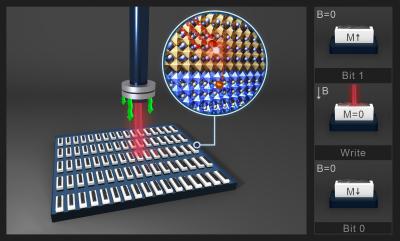2D perovskite shown promise for advanced memory devices
A Pohang University of Science & Technology (POSTECH) research team has designed a halide perovskite material for next-generation memory devices. Characteristics like low-operating voltage and high-performance resistive switching memory could mean great commercialization potential.
As rapid distribution and transmission of high-quality contents are growing rapidly, it is critical to develop reliable and stable semiconductor memories. To this end, the POSTECH research team succeeded in designing an optimal halide perovskite material (CsPb2Br5) that can be applied to a ReRAM device by applying first-principles calculation based on quantum mechanics.





 US-based RRAM developer 4DS Memory announced that it developed a working 40nm
US-based RRAM developer 4DS Memory announced that it developed a working 40nm 

